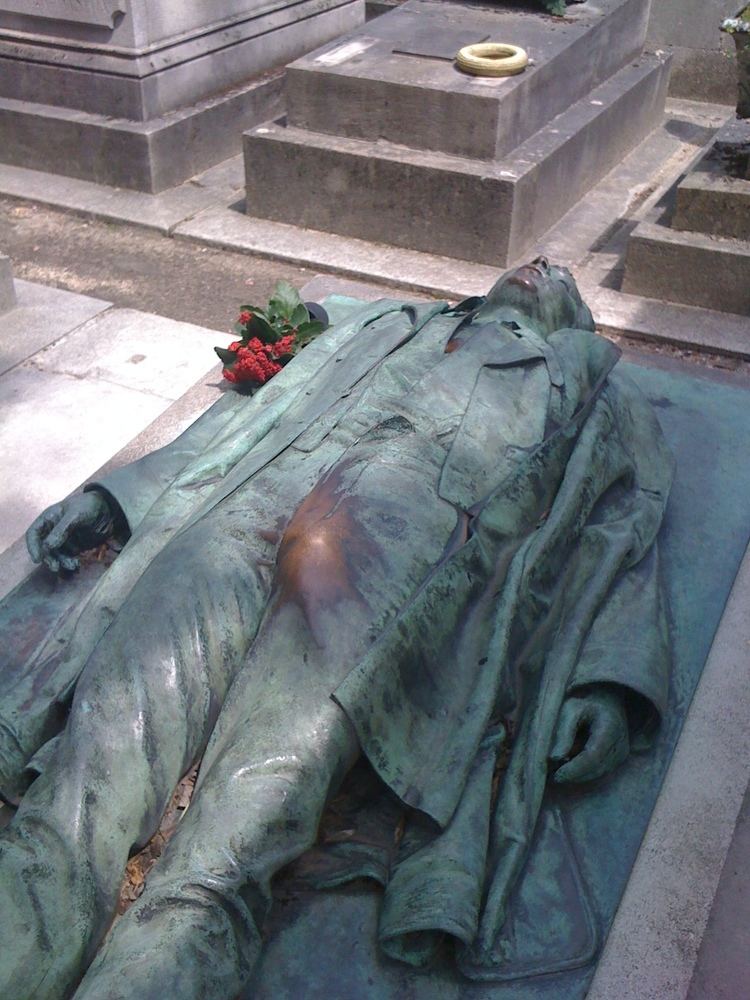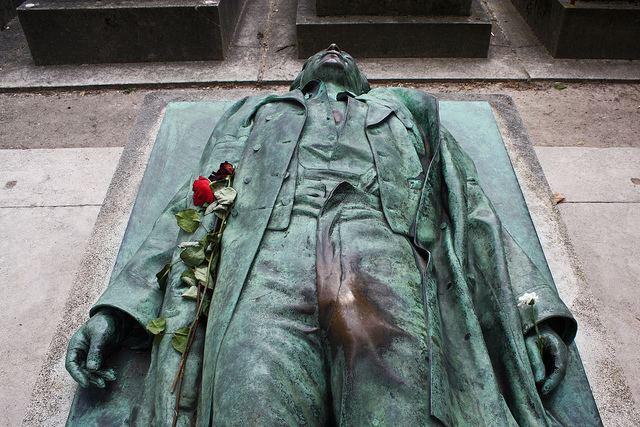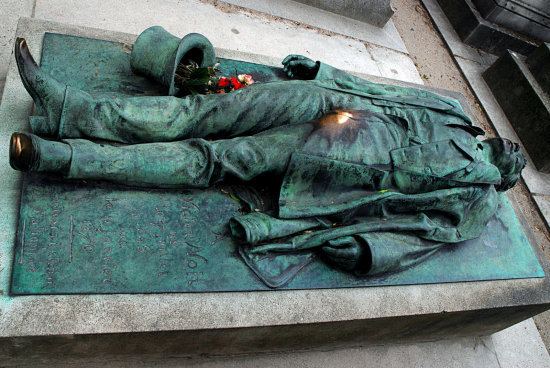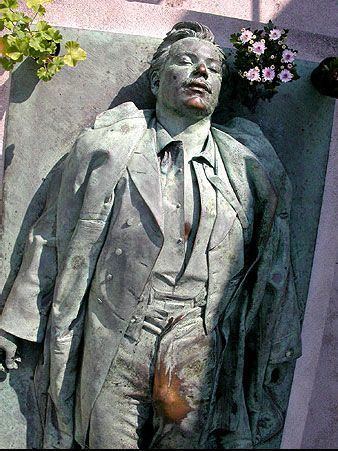Name Victor Noir | Role Journalist | |
 | ||
Died January 10, 1870, Paris, France Buried Pere Lachaise Cemetery, Paris, France Similar People Henry IV of France, Jean‑Paul Marat, Jean Jaures, Edouard Mortier - duc de Tr, Yahya El Mashad | ||
Cimeti re du p re lachaise victor noir
Victor Noir, (27 July 1848 in Attigny, Vosges – 11 January 1870 in Paris), was a French journalist who is famous for the manner of his death and its political consequences. His tomb in the Père Lachaise Cemetery in Paris later became a fertility symbol.
Contents
- Cimeti re du p re lachaise victor noir
- 9 years later roshina sur la tombe de victor noir
- Life
- Background to shooting
- Shooting
- Aftermath
- Monument
- References

9 years later roshina sur la tombe de victor noir
Life

Son of a Jewish cobbler who had converted to Catholicism, born Yvan Salmon at Attigny, Vosges, he adopted "Victor Noir" as his pen name after his mother's maiden name. He went to Paris and became an apprentice journalist for the newspaper La Marseillaise, owned and operated by Henri Rochefort and edited by Paschal Grousset.
Background to shooting

In December 1869, a dispute broke out between two Corsican newspapers, the radical La Revanche, inspired from afar by Grousset and the loyalist L'Avenir de la Corse, edited by an agent of the Ministry of Interior named Della Rocca. The invective of la Revanche concentrated on Napoleon I. On 30 December, l'Avenir published a letter sent to its editor by Prince Pierre Bonaparte, the great-nephew of Napoleon, and cousin of the then-ruling Emperor Napoleon III. Prince Bonaparte castigated the staff of la Revanche as cowards and traitors. The letter made its way from Bastia to Paris. Grousset took offense and demanded satisfaction. In the meantime, la Marseillaise lent strong support to the cause of la Revanche.

On 9 January 1870, Prince Bonaparte wrote a letter to Rochefort, claiming to uphold the good name of his family:

After having outraged each of my relations, you insult me with the pen of one of your menials. My turn had to come. Only I have an advantage over others of my name, of being a private individual, while being a Bonaparte... I therefore ask you whether your inkpot is guaranteed by your breast... I live, not in a palace, but at 59, rue d'Auteuil. I promise to you that if you present yourself, you will not be told that I left.
Shooting

On the following day, Grousset sent Victor Noir and Ulrich de Fonvielle as his seconds to fix the terms of a duel with Pierre Bonaparte. Contrary to custom, they presented themselves to Prince Bonaparte instead of contacting his seconds. Each of them carried a revolver in his pocket. Noir and de Fonvieille presented Prince Bonaparte with a letter signed by Grousset. But the prince declined the challenge, asserting his willingness to fight his fellow nobleman Rochefort, but not his "menials" (ses manœuvres). In response, Noir asserted his solidarity with his friends. According to Fonvieille, Prince Bonaparte then slapped his face and shot Noir dead. According to the Prince, it was Noir who took umbrage at the epithet and struck him first, whereupon he drew his revolver and fired at his aggressor. That was the version eventually accepted by the court.
Aftermath
A public outcry followed and on 12 January, led by political activist Auguste Blanqui, more than 100,000 people joined Noir's funeral procession to a cemetery in Neuilly. Attendance in this procession was regarded as a civic duty for republicans. When Sadi Carnot endorsed electoral candidates, he often identified them as such attendees. ("Il a été au convoi de Victor Noir.")
At a time when the emperor was already unpopular, Pierre's acquittal on the murder charge caused enormous public outrage that erupted into a number of violent demonstrations. However a plebiscite was held over a new more liberal constitution and it was approved by a crushing majority. The Republican cause appeared to be lost.
Separate events however led to the Franco-Prussian War which resulted in the overthrow of the Emperor's regime on 4 September 1870. In 1891, following the establishment of the Third Republic, the body of Victor Noir was moved to Père Lachaise Cemetery in Paris.
Monument
A life-sized bronze statue was sculpted by Jules Dalou to mark his grave, portrayed in a realistic style as though he had just fallen on the street, dropping his hat which is depicted beside him.
The sculpture has a very noticeable protuberance in Noir's trousers. This has made it one of the most popular memorials for women to visit in the famous cemetery. Myth says that placing a flower in the upturned top hat after kissing the statue on the lips and rubbing its genital area will enhance fertility, bring a blissful sex life, or, in some versions, a husband within the year. As a result of the legend, those particular components of the otherwise verdigris (grey-green oxidized bronze) statue are rather well-worn and shiny.
In 2004 a fence was erected around the statue of Noir, to deter superstitious people from touching the statue. However, due to supposed protests from the "female population of Paris", in fact led by French TV anchor Péri Cochin, it was torn down again.
